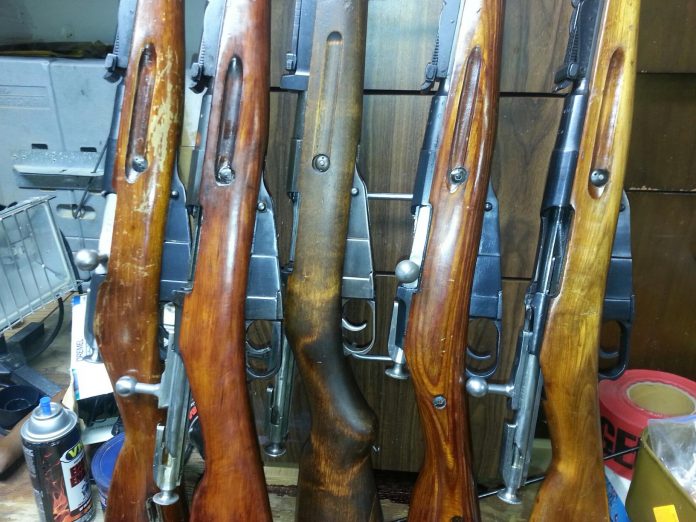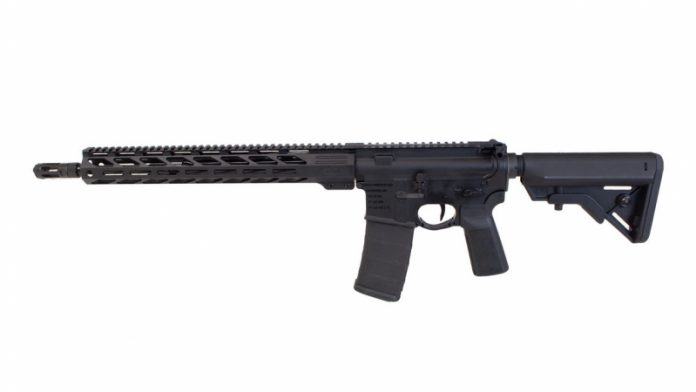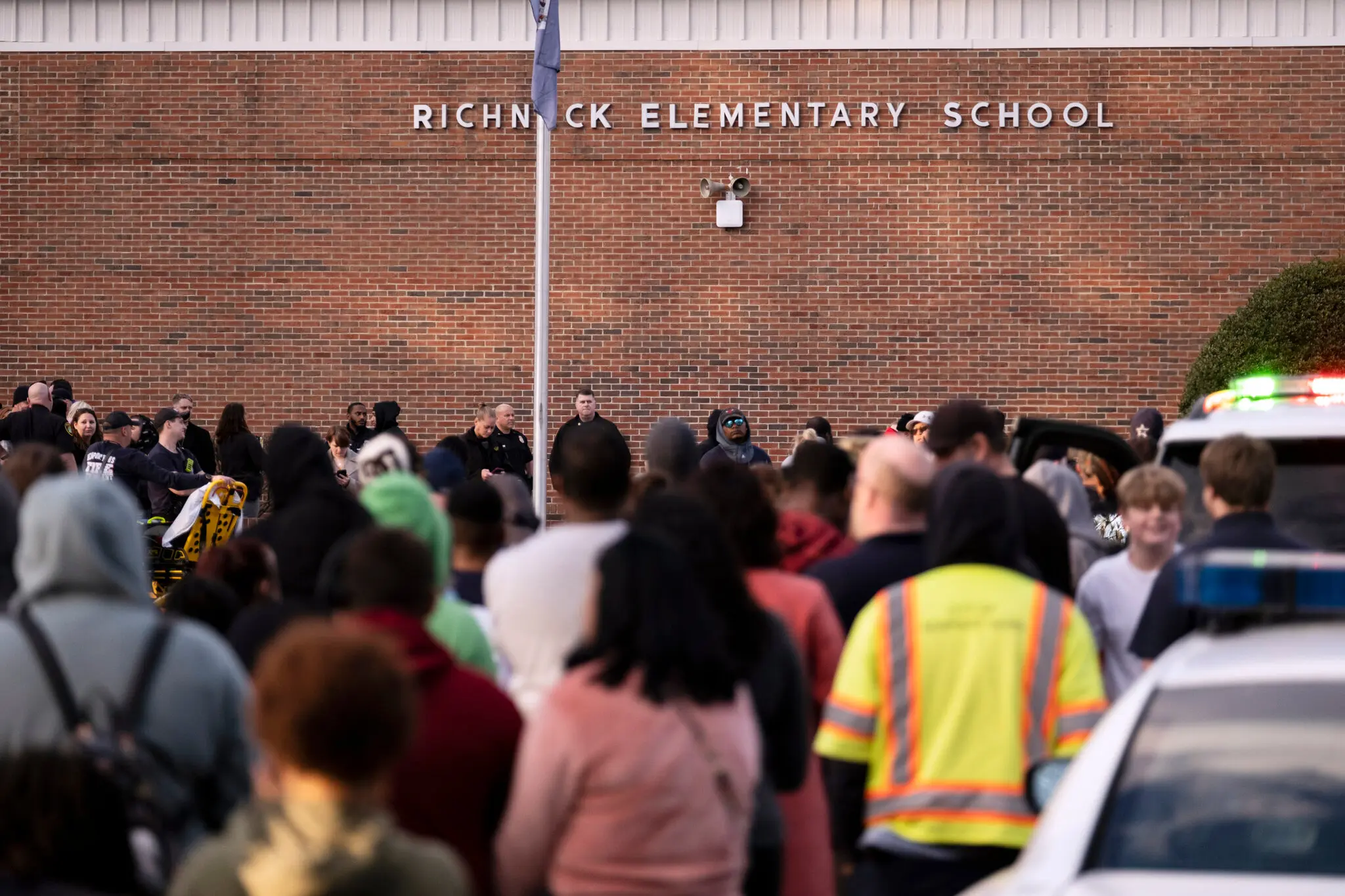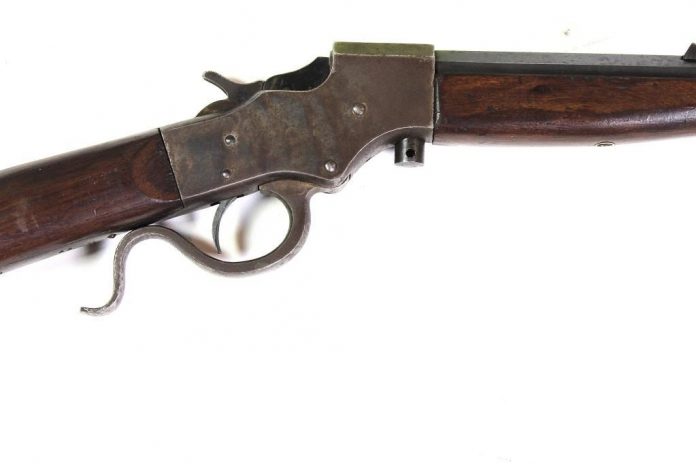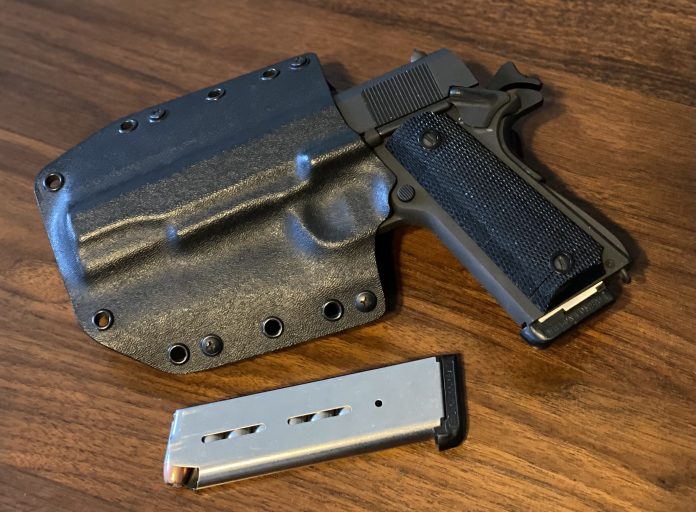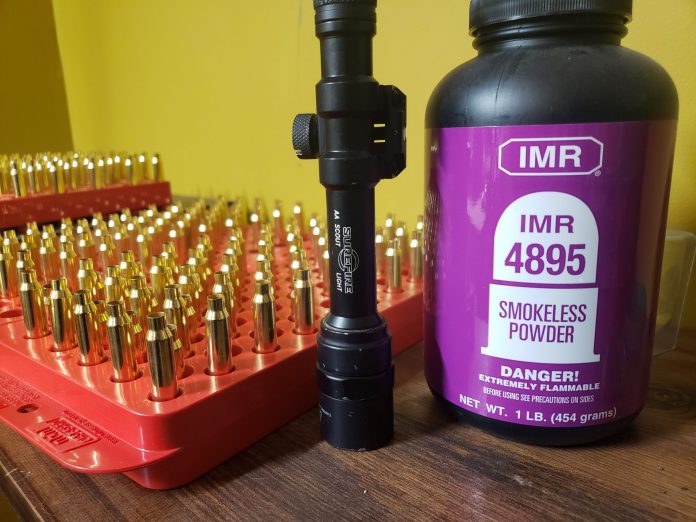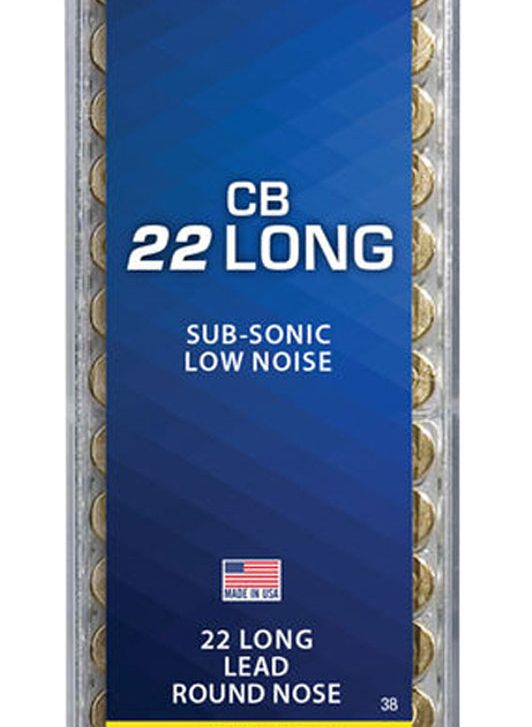While no sane person claims that legal cannabis and guns go together, it seems most people understand that like alcohol, one can enjoy both safely at separate times. Despite this in 2016, the ATF made a change to question 11 on the 4473 –the federal form that any transfer of ownership through a federally licensed firearms dealer requires to complete, and on which it is a federal crime to lie– making it explicitly clear that use of products containing cannabis, even in a state which had deemed it legal is enough to bar someone from exercising an enumerated right.
Specifically, the added language reads: “The use or possession of marijuana remains unlawful under Federal law regardless of whether it has been legalized or decriminalized for medicinal or recreational purposes in the state where you reside.” In layman’s terms, whatever your crazy state might think, the ATF is here to ensure that if you snort 13 marijuanas and go on a shooting spree, it won’t be with a legally transferred gun. Of all the ways a federal LEO could flex its authority to ensure the continued safety of the average American, it sure is one of them.
Since the feds made this move to heroically place themselves between the sleepy, bloodshot eyes of pot-related gun violence and the American public, that public has –resoundingly– voted for them to sit back down. In fact 37 states, D.C., and Guam now have some form of legal weed. Further, some of those states have even produced rulings that preclude concealed carry permit issuing agencies from discriminating against legal marijuana users. Legally owned cannabis and guns are somehow existing in the same household without producing violent waves of crime hundreds of thousands if not tens of million of times a day across the country. It’s almost like people who obey the law are poorly represented when it comes to the commission of violent crime.
Despite this, neither Trump nor Biden made any moves towards recognizing a states right to self-determination on this topic. In fact as recently as last year, Biden defended the ATF positioning itself as arbiter of your legal recreational decisions. Cannabis and guns seemed destined to be federally prohibited from cohabitating legally forever until just recently when, as it sometimes does, Oklahoma happened.
Citing Bruen, a Trump-appointed federal judge struck down the prohibition on gun ownership due to otherwise legal cannabis use. The historical test Bruen requires is shaping up to cut a swath through a bevy of restrictive gun laws that have sat on the books unopposed for decades. Cannabis and guns is just one small facet of this, as the wave of court cases challenging laws that blatantly violate it illustrates.
While there is certainly potential for abuse –as there is with any liberty– either we must presuppose our fellow countrymen are adults who are capable of making responsible decisions, or we must abandon the pretext of liberty and grant the feds power to restrict everyone’s behavior, “for their own safety”. Regardless of the party calling for the restriction, those who love liberty should resist. Allowing ownership of both cannabis and guns is simply an extension of this line of thinking, and no freedom-minded person should be threatened by it on principle.
Cannabis and Guns: Legal?
Mosins, Still Doing Work
If there’s any individual weapon that deserves the most credit for beating back Nazi Germany, it might be the legendary bolt-action Mosin-Nagant rifle.
The Soviet Union made them in absolutely huge numbers — and they’re still available and rather cheap compared to their contemporaries. What’s more extraordinary is that the basic design is more than a century old.
Even now, rebels carry Mosin-Nagants alongside more modern weapons as in conflicts from Ukraine to the Middle East.
But there’s good reasons for that. It’s because of the rifle’s simplicity, ruggedness and a design philosophy summed up as “if it ain’t broke, don’t fix it.”
During the late 19th century, the Russian Empire wanted to upgrade its arsenal. Instead of its existing Berdan II single-shot rifles, the empire wanted a cutting edge repeating weapon that fired smaller but higher-pressure metallic cartridges.
Russian army officer and engineer Sergei Ivanovich Mosin designed the new rifle’s action — a straightforward bolt action that “cocks-on-open.” Belgian weapons designer Leon Nagant improved the weapon’s feeding mechanism.
In 1891, Russia adopted Mosin’s rifle and christened it the “Three-Line Rifle, Model of 1891.”
The rifle has few moving parts — which is part of its beauty. Its beefy mechanism only consists of seven pieces, while its trigger group consists of three. The heavy stock is Russian birch wood.
These rifles have seen a lot of battles. Russians troops carried them during the 1905 war with Japan. The rifles served with Russian troops during World War I. The Bolsheviks carried those same rifles again when they fought to create the Soviet Union from 1917 to 1922.
But the Soviets introduced the most popular variant — the Mosin-Nagant 91/30. In 1930, the Soviets modernized the rifle, installed several major upgrades and added the “30” designation to its name.
Its basic design was almost 40 years old then, and people are still using it.
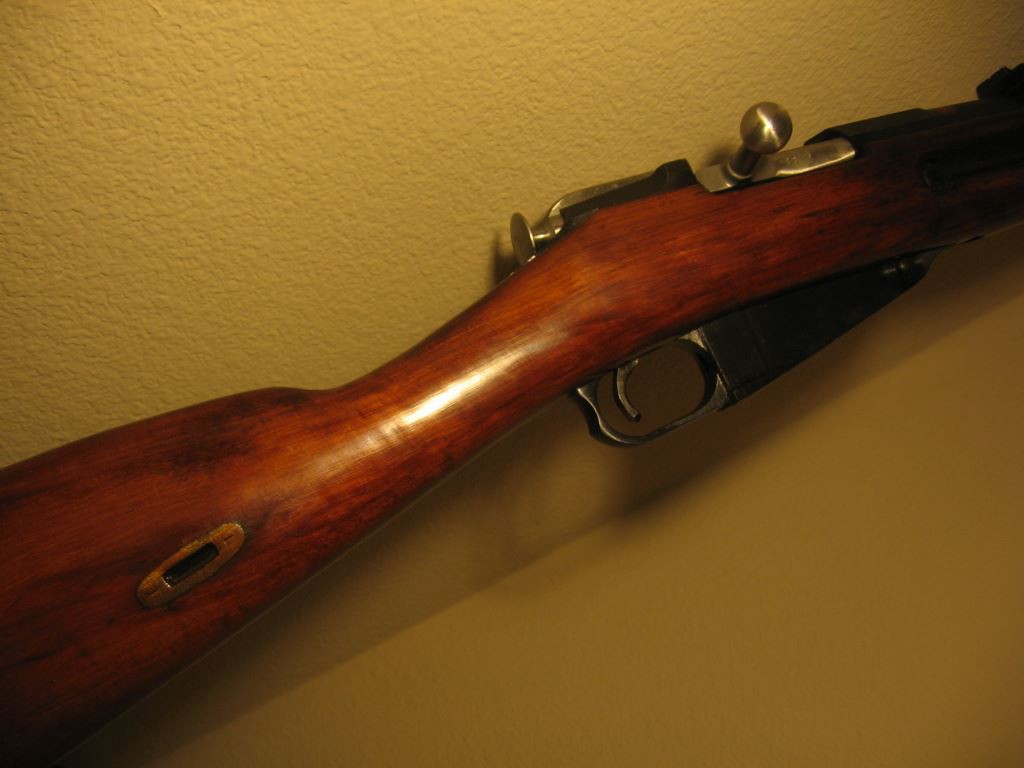
Gunsmiths shortened the 91/30 by a few inches, and calibrated its sights in meters. The older imperial rifles have sights calibrated in archaic arshin units standardized during the reign of Peter the Great.
But if you see a Mosin-Nagant, it’s most likely a 91/30 from World War II with sights measured in meters. The Soviet army entered the war equipped with this triokhlineika — or “three-liner” — as their standard issue bolt-action battle rifle.
The Soviet Union made millions of Mosin-Nagants, and manufactured them in their greatest numbers during the early 1940s. During the middle of the war, the Kremlin developed the M-44 carbine.
This wasn’t the first Mosin-Nagant carbine, but the M-44 features a distinctive integral folding bayonet which better met the Soviet army’s needs. The carbine is roughly 10 inches shorter than the 91/30, making it easier to carry and use in cities.
Toward the end of the rifle’s service life, the Soviets shifted to arming soldiers with carbines instead of the full-sized version. Despite the carbine’s better handling, its shorter barrel means that shots are louder and the muzzle flash is brighter.
The Tula and Izhevsk arsenals produced the bulk of the Soviet army’s Mosin-Nagants. Izhevsk produced more, as its factories were safely tucked between the Ural Mountains away from the front lines.
After the war, Moscow widely distributed them to communist countries and Soviet allies. Mosin-Nagants appeared in China, North Korea, Vietnam and the Middle East. Today, pro-Russian separatists wield them in Ukraine, as do Islamist groups in North Africa and the Taliban in Afghanistan.
Other non-communist nations — most notably Finland — used Mosin-Nagant variants. During its two wars with the Soviet Union, Finland produced domestic variants and retrofitted captured Soviet rifles.
Shooters and collectors widely consider the Finnish rifles to be among the finest and most accurate Mosin-Nagant variants ever produced. They also fetch a considerably higher price.
Like many Russian weapons, manufacturers engineered the Mosin-Nagant with generous tolerances so it would be able to fire in a wide range of conditions, especially during brutal winters.
To suit Russian soldiers and their bulky overcoats, the Mosin-Nagant’s stock is slightly shorter than many early and mid-century battle rifles. This can make them slightly awkward to shoot if you’re not bundled up — but modern shooters often attach accessories for extra length.
The Mosin’s full-size cartridge — the 7.62 x 54-millimeter Rimmed — is highly reliable. Its tapered sides make its smooth enough to feed and extract from dirty or fouled chambers.

The cartridge’s geometry makes it easy to produce accurate match or specialty ammunition. The Finns, in particular, manufactured highly reliable examples of this cartridge.
The 7.62 x 54R’s potency is comparable to the West’s 7.62 x 51-millimeter NATO cartridge and even its old American contemporary, the .30/06 Springfield. Not surprisingly, this Russian cartridge has the distinction of being the longest serving military round in continuous use.
Detractors say that the Soviet Mosin-Nagant is not as refined as its wartime and world-famous rival, the German Mauser Karabiner 98k rifle. But the counter-argument is that the Soviet Union operated under very different circumstances.
Sure, the Russian rifle is less refined. It was for a war-time peasant army facing an existential threat. Versions from World War II lack the fit and finish of pre-war rifles, but they’re accurate and sturdy enough to suit a battlefield.
Both the Mosin-Nagant and Karabiner hold five cartridges in their internal magazines. Both have similar tangent sights, and both will bruise the shoulder after shooting several dozen rounds thanks to their punishing recoil.
But the Mosin-Nagant is robust, simple to maintain and easy to mass-produce quickly. No wonder the Soviets carried it to victory, and why it keeps popping up around the world.
Author’s Note 2023: While I certainly see the hyperbolic sensationalization of pointing out that Russian troops and their allies are using outdated equipment, which they are–it is also fair to point out that in most cases these are PU Mosin Sniper Rifles (Or rifles with affixed aftermarket optics). Putting a riflescope on a bolt-action rifle made in 1943 that’s still in working condition fundamentally isn’t any different than putting a scope on a Tikka T3 chambered in 6.5mm Creedmoor today; it’s just that one will be more clunky than the other.
This article was edited for GAT Daily and I originally wrote it for War Is Boring back in 2015. I reposted it here because the article was originally inspired by the 2014 part of the Ukraine conflict which obviously escalated last year again.
Gunday Brunch 86: Senile Millennial Ramblings
In this unhinged episode, the boys talk about…well it’s a lot of stuff, guys. But there is ammo talk! And John Wick 4 talk!
YOU’RE NOT HELPING!
By the time this posts, the ATF will have just released their final brace ruling and published it in the Federal Register.
Ever since they brought the brace ban back into the conversation on January 13th, there’s been an understandable amount of anger and frustration in the online discussion.
Unfortunately, some people have allowed the anonymity of the keyboard and the cloak of righteousness to lead them to behavior that they probably wouldn’t exhibit in person.
We are at a pivotal stage, and have the chance to either make great headway or do irreparable damage to our cause.
If these events have motivated you to contact your legislators and express your displeasure in a well articulated fashion, donate to one of the 2A activist groups with a track record of productive action and success, or otherwise involve yourself in the process, then this article isn’t really directed at you.
If, however, your indignation over the ATF’s overreach led to emotional rants on social media, combative statements about “fedbois”, or other belligerent conduct, congratulations. All you’re doing is playing directly into the caricature of the unreasonable gun-zealot that’s being painted of us by the opposition.
These emotional ramblings do nothing but make the poster feel good and unravel the hard work of those that are actually struggling to make headway.
You’re not helping, and frankly I resent that people are smugly patting themselves on the back while simultaneously making life harder for those that are working towards productive change.
Dunking on the anti-gun crowd does nothing. Those people are already so staunchly entrenched in their belief that they’re unlikely to ever accept our perspective as valid.
There is, however, a large swath of society that is utterly agnostic on the subject. This is where optics matter. Sterile facts and extreme fear-mongering aren’t an effective way to win hearts and minds. Far too many people get fixated on making sure everyone knows just how right they think they are that they completely miss opportunities to actually be persuasive.
Safety? Security? Neither?
In a rather morbid case of semi-prophetic happenstance, USA Today penned and published this article relating the the attempt to balance school safety and security concerns with the rights and access of students, especially those with disabilities.
Protocols to stop mass school shootings are spreading. Are students’ right being violated?
On January 6th, a 6 y/o student described as being “acutely disabled” shot their teacher on a day they had deviated dramatically from the student’s care plan of direct parental involvement. The school’s failings in this case are catastrophic enough that there have been several staffing changes and the teacher is suing the school district for damages.
The methods put into place to try and prevent a repeat incident include things like, clear backpacks, metal detectors, two more resource officers, and so forth.
All procedures and devices that, if you’ll recall with me, the Parkland students grew very tired of very quickly. They considered it, rightly so, invasive and dehumanizing to be subject to search, need to have transparent bags to bring their items into the school, and pass through metal detectors, wanding, and if necessary be searched physically. Female students commented on the embarrassment of having items of a personal or hygienic nature visible for all to see, or their clothes and under garments visible if they needed to change for a practice or PhysEd class.
In short, they discovered that the measures used to harden a structure against the possibility of a future attack suck to deal with. They are intrusive, dehumanizing, treat everyone as a potential attacker, are often hands on, and have no regard for whatever personal level of privacy and dignity you would like to maintain.
Why?
Because they have to do that to be even remotely effective. Once you have taken the steps from passive, observant, and reactive security measures to active ones deviations from this invasion of personal privacy are ways through the screen. That’s how security works, it is a screen, a filter. It is designed to catch what presence, consequence, and morality do not deter.
‘Subject to search’ is a precarious thing, and it has been notably abused by authorities. It is imperfect at best.
But that is how security works. Sifting through the normal to try and catch the rare dangerous abnormality.
You balance these against the known factors,
- You can’t screen enough to close all avenues, period
- Even a temporary failure can result in a catastrophic breach
- You are actively irritating and violating the privacy of those you are trying to protect and this will annoy, unnerve, and anger them
- There will be mistakes
- There can be abuses by your screening staff that dramatically undermine your position
- The larger the staff and the more limited your budget for compensation and paying professionals, the more likely an incident occurs at some point
So when we look at what a prudent, yet respectful, level of security and screening are stacked against the rights of students to participate in a publicly funded learning environment, especially if they have learning or physical difficulties, it is a volatile and complex equation. You are pushing the rights of dozens, hundreds, even thousands of people into a small space. You are, as a school, simultaneously responsible for several things for all of these people, their safety and their educational experience being high on that list. Those two items will come into conflict. Students and staff will come into conflict, making for situations where a judgement call must be made and someone will lose. Someone will be put off or denied, someone or everyone’s privacy will suffer, there will be aggrieved parties, and rightly or wrongly they will resent you for that call that had to be made.
This is how security works. It’s juggling volatile chemicals, but the chemicals all have a mind of their own too. Make a tiny mistake, get a small burn. Probably no biggie, but it was a close call. That’s scary, some of the chemicals think it was scary too and might demand you juggle differently. That juggling might be ten times harder or make the juggling entirely ineffective at preventing spills, drops, and burns, but it makes the chemicals feel better about being juggled.
Make a big mistake, miss a catch, or stumble, or be distracted too long and it drops and explodes. People die.
That is security.
Benjamin Franklin was not being hyperbolic by saying trading freedom for safety results in neither, that’s just the reality of the diminishing returns of safety and security efforts.
AR15 Barrel Profiles: Finding the Perfect Profile for Your Build
A critical factor in building or customizing an AR-15 is the choice between AR15 barrel profiles. The profile, which defines the shape and size of the barrel, can greatly affect the performance and functionality of the firearm.
Let’s take a look at the different AR-15 barrel profiles available and help you understand the pros and cons of each so you can make an informed decision. From heavier barrel profiles to lightweight pencil barrel profiles, we’ll cover it all.
Whether you’re a competitive shooter, a hunter, or just a hobbyist, this guide will help you choose the perfect barrel profile for your specific needs and goals.
AR Barrel Profiles Explained
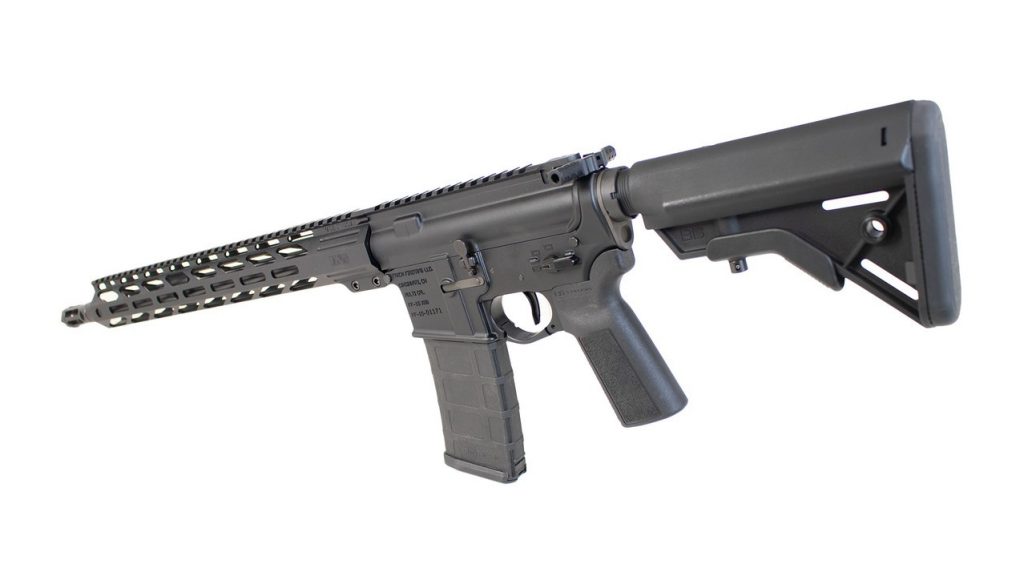
The term “barrel profile” refers to the thickness of a barrel on an AR-15 style rifle, such as the Faxon Sentry 16” 5.56 Rifle. Different barrel profiles can impact the performance of the gun in various ways.
For instance, thinner barrels are lightweight and easy to handle, while thicker barrels provide more stability by adding weight to the front of the gun and can withstand more heat.
It’s essential to consider the trade-offs of different barrel options available in the market when making a choice.
Let’s now look at the different AR-15 barrel profiles to see what makes each one unique.
Gunner Profile
The Gunner profile is a blend of two of the best-performing profiles of all time, Gov’t and Pencil.
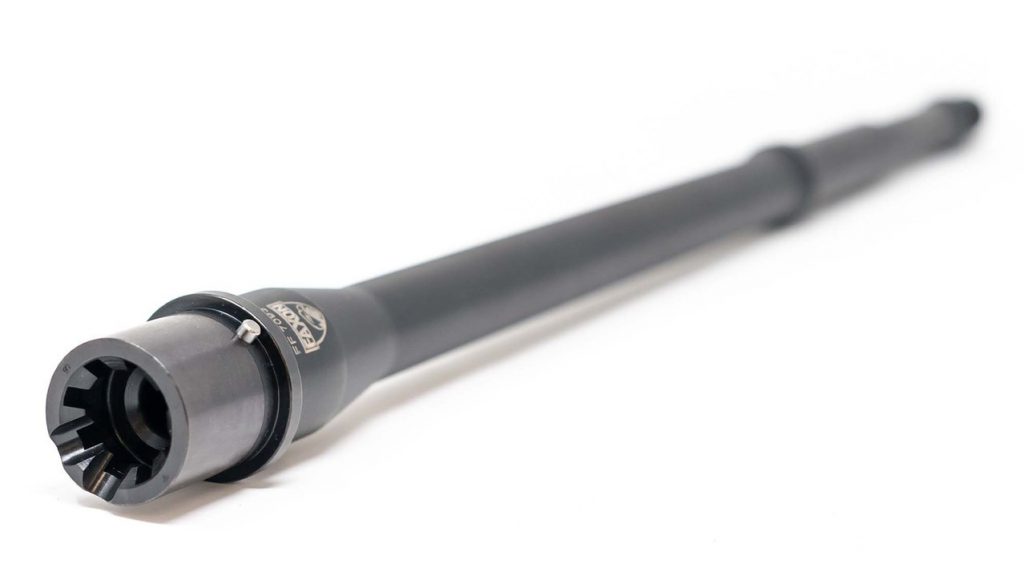
Faxon’s Gunner profile combines the durability of the Gov’t profile with the weight savings and maneuverability of the Pencil profile.
The Gunner profile brings the rifle’s balance back towards the shooter’s body, limiting fatigue and allowing for shooting, training, or hunting all day long.
Government/SOCOM Profile
A SOCOM barrel for an AR-15 is designed differently from the standard M4/A2 barrel.
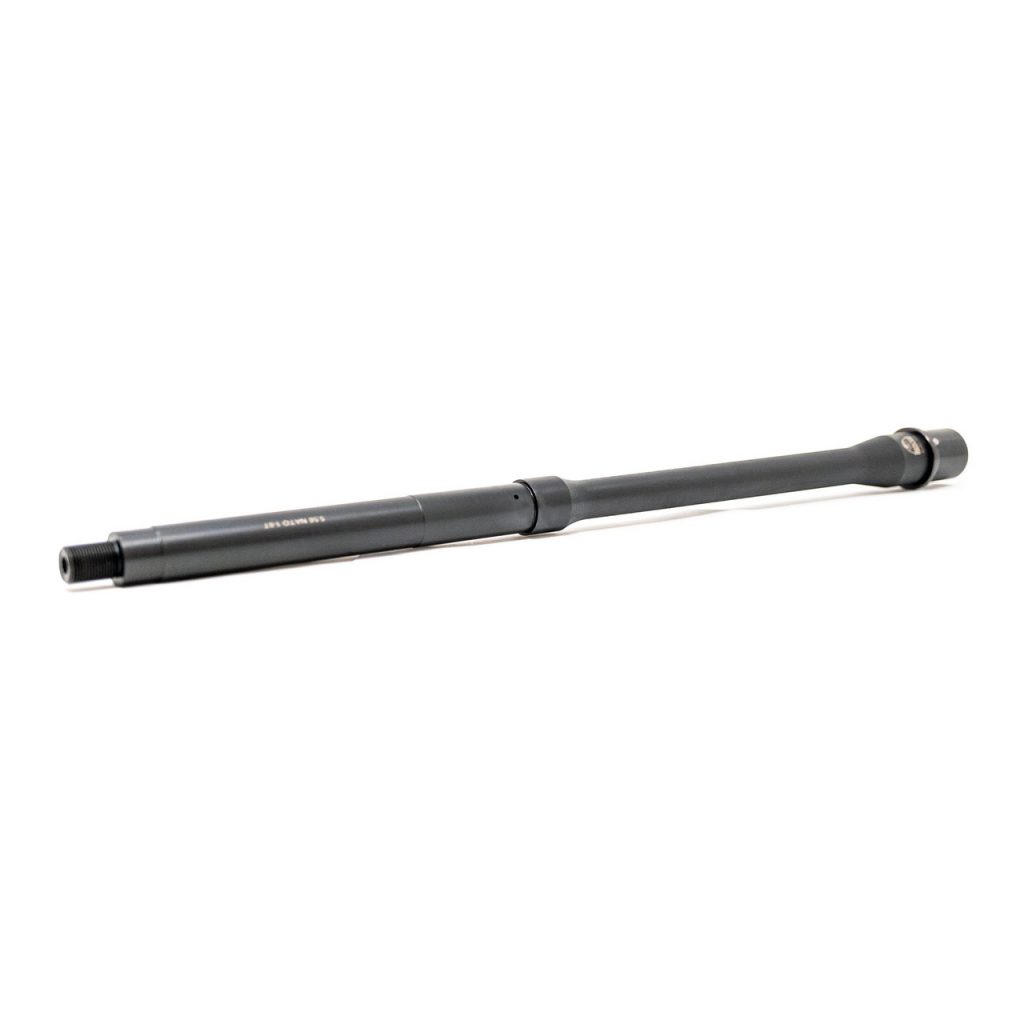
Instead of being consistently thick throughout, it has a thinner section past the gas block and a thicker section near the chamber. In addition, SOCOM AR15 barrel profiles often have a slot for attaching a grenade launcher and provide a balance between strength and weight.
If you’re looking for a barrel that can handle sustained shooting while still being lightweight, a SOCOM profile barrel may be a good option for you.
Pencil Profile
The pencil barrel is the original profile for the AR-15, typically measuring 0.625 inches in diameter.
It is known for being slim and lightweight, making it easy to carry and handle. However, due to its thinness, it may overheat more quickly during rapid firing, leading to elastic deformation or warping, which can affect reliability and accuracy.
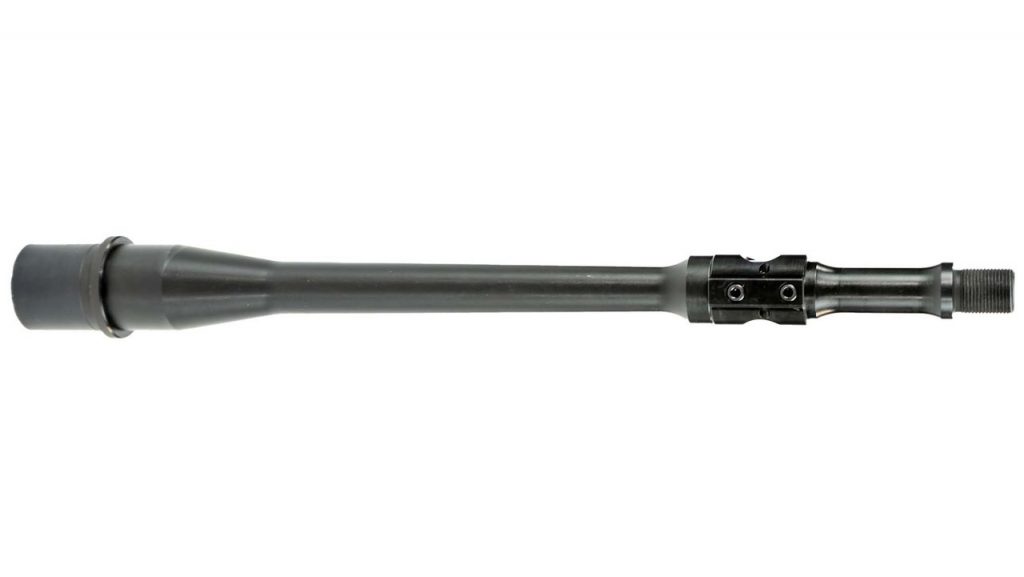
Unlike run-of-the-mill pencil barrels, Faxon Firearms barrels are properly heat-treated and stress-relieved to improve heat resistance and longevity.
The durability of this AR15 barrel profile is ideal for shooters with a light or medium shooting schedule.
AR Barrel Profiles: Finding Your Match
The barrel profile of an AR-15 rifle can greatly affect its overall performance and handling.
The three most common barrel profiles are the Gunner, Government, and Pencil. The Government/SOCOM profile is the thickest and heaviest option, providing the most stability and accuracy but also adding extra weight to the rifle.
The pencil profile is the thinnest and lightest option, making it easier to handle and carry, but sacrificing some stability and accuracy. The government profile is a balance between the two, offering a good compromise between weight and performance.
Ultimately, the choice of barrel profile will depend on the individual’s personal preferences and intended use of the rifle. Therefore, it is important to consider the trade-offs and choose the barrel profile that best suits your needs.
Public Service Announcement: China is Watching, Like Really Closely
Currently there is a massive Chinese Spy Balloon over Montana that the Pentagon has been tracking for a few days now. So, I’m sure that brings up a few questions.

- Why haven’t they shot it down?
According to the Department of Defense, the risk is not worth the reward yet. Technology is on that balloon that should be attempted to be saved. Also, the debris. Not just debris like hot air balloon shrapnel, but there isn’t enough knowledge known yet of what could be on that balloon. Nerve agents that are released when shot down? We just don’t know. According to a senior defense official, “It was the “strong recommendation” of senior military leaders, including the Chairman of the Joint Chiefs of Staff Gen. Mark Milley, “not to take kinetic action due to the risk to safety and security of people on the ground from the possible debris field,” the official said”-CNN - Where is it headed?
As I am writing this article it is currently over Montana and headed toward Virginia. - What is the elevation of it?
Good luck taking pop shots at the balloon. It is currently at 64,000 ft which is double what a commercial airplane flies at.
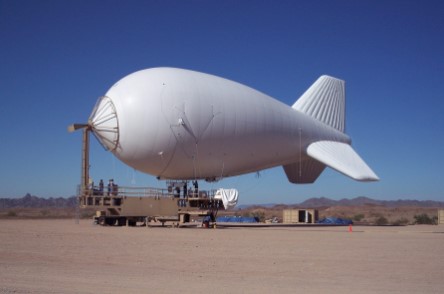
All in all, it is sketchy and a little bit freaky. While officials are stating that the aircraft isn’t able to gain “significant” intel gathering, the feeling of it being up there just doesn’t sit right. So, I implore you to keep up with it with an easy google search.
Additional Note: In Keith Finch’s words, (the editor of Gatdaily) “my desire to have NORAD broadcast its exact location and time like they do Santa so that folks can make obscene gestures at it is extreme.” If only we had a fun way to track this balloon at make light of severe illegal intel gathering from one of the largest enemies of the United States right now..oof..
5th District Puts New Illinois AWB on Restraining Order.
A mere 23 days after Illinois’ Democratic led efforts to restrict their residents’ 2nd Amendment rights, blaming the existence of firearms for the state of crime ridden Chicago is an old scapegoat after all, the Illinois 5th District has told Illinois proper, ‘Hey, not so fast.‘
On January 24, Effingham County Judge Joshua Morrison ordered a temporary restraining order in response to the lawsuit which prevented its enforcement, and said in his ruling that the plaintiffs are “being immediately and irreparably harmed each day in which their fundamental right to bear arms is being denied.”
The law banned the sale and manufacture of AR-15s and AK-47s, long gun magazines that hold more than ten rounds of ammunition, and handgun magazines that hold more than 15 rounds of ammunition. The law also extended the state’s “red flag” law scope, and enabled a person to be prohibited from purchasing a firearm if they were on the list for a longer period of time.
The Associated Press reports, Illinois Attorney General Kwame Raoul, a Democrat, appealed Morrison’s ruling but the three-judge appellate court upheld the restraining order in a 2-to-1 decision.
The appellate court said the restraining order can stay in place and extended its scope beyond the plaintiffs to apply to all of Illinois, reports Fox News.
The court said the plaintiffs’ suit had “a likelihood of success on the merits” in that the gun law likely violated their equal protection as granted under the US Constitution. [emphasis added]
So PICA, whose title is not quite as ironic as the SAFE Act in New York but to the same effect, is now on hold. If PICA fails here it could signal the fall of assault weapon bans nationwide, all thanks to Illinois Democrats not being able to leave well enough alone and try to solve their crime problems by solving… you know… crimes.
Even Illinois’ own courts have signaled the law is unlikely to pass final judicial review, before even reaching federal courts. This may signal an attempt by the courts to contain spillover onto other states with similar laws, like New York and California, as if it remains a state court handling internal matters there would be less national precedent to rely upon.
VA School Shooting Accountability?
The Richneck Elementary School shooting involved the –thankfully non-fatal– Jan 6 shooting of teacher Abigail Zwerner by her 6y/o student. This bizarre tragedy was a shock even with limited initial details that always accompany early accounts of such incidents. The extreme youth of the shooter makes this a marked outlier among the already rare and difficult to understand issue of school shootings, but the more one learns about this event, the more absurd it becomes. So the latest news of the Principal “leaving” the school, while remaining employed by the district may not be a shock –as it follows the resignation or removal of the Assistant Principal, and school superintendent– but the announcement of a lawsuit filed by the injured teacher, and the reason for that lawsuit certainly could qualify, but first some details.
The student involved in the school shooting was described by family as “acutely disabled” and had a resultant care plan that involved a parent attending class with them. The family also described the gun in question as legally purchased, and stored on a shelf with a trigger lock. The day of the shooting was reportedly the first week since the implementation of the care plan in which a parent was not present with the student, but neither this nor the status of the gun used in the shooting are the subject of Zwerner’s lawsuit: inaction on the part of school administrators is instead the focus.
So how did the administration fail so badly as to warrant a lawsuit by the one victim of this school shooting? Catastrophically, it appears: Four times on Jan 6, alarms were raised about the possibility of violence on campus by three separate faculty. Between 11:15AM, and the shooting at 2:00PM, administrators were informed that the same student had:
-Threatened to beat up another student
-Had their bag searched for a gun
-Told a student at recess that they were in possession of a gun and would shoot them if they told anyone
A fourth school employee requested to search the student, but was told the the day was almost over, and to “wait the situation out because the school day was almost over.“
As more details come to light, this school shooting seems to be less of a random tragedy, and more of a complete mishandling of reports of a student with a gun leading to a decidedly preventable outcome that has spurred only reactionary action. Richneck Elementary students will return to class with clear backpacks, metal detectors, and two additional school security officers. While these efforts aren’t unwelcome, they are only being implemented because those responsible for keeping their students and employees safe allowed their inaction to precipitate a school shooting that never had to happen.
Streamlight ProTac 2.0 Line: A Larger and Longer Lasting Battery
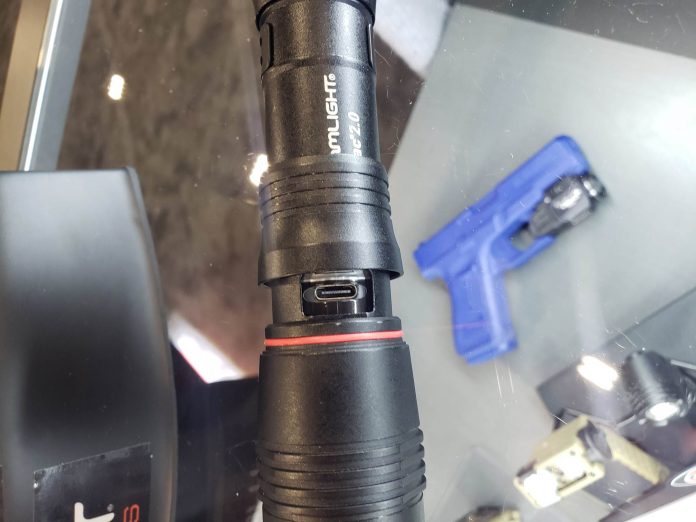
The ProTac 2.0 Line is an updated line to your favorite products with some new ones thrown in. This includes an updated long gun light, updated headlamp, and updated primary flashlight. This line was released to highlight the larger battery that Streamlight made for these products. Not only is it larger but it also charges by USB-C which honestly, that is what everything is shifting towards now.
Bigger/USB-C/and Easy Access Battery
The battery system from Streamlight is a genius battery due to it not just being a battery. Not only can it be used between multiple products but it also can be charged while still inside of these products due to an access port within the products.
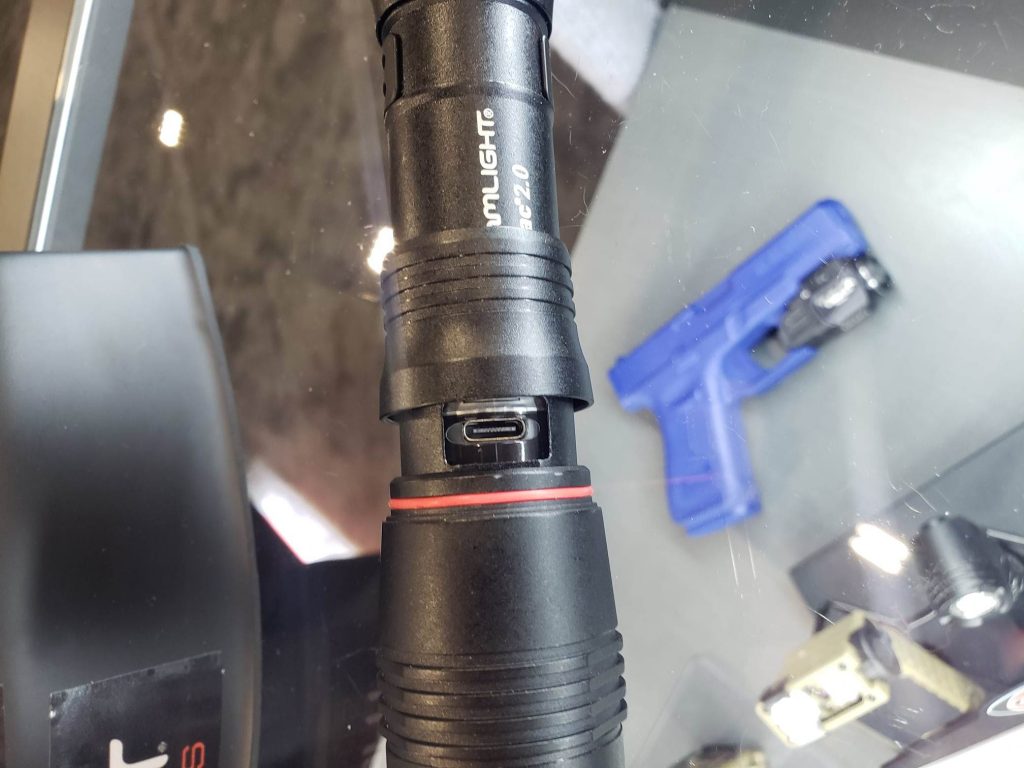
The Battery
The updates to the SL-B50 battery itself this year is that it is 46% bigger which means more power. There is also a light that will show through the end of the battery, red for charging, green for fully charged. It is USB-C chargeable which is a large updated considering the old smaller style battery was Micro-USB.
For those nerdy guys, the SL-B50 battery is a 3.6V, 4900mAh battery and rechargeable at least 500 times. If the battery dies or somehow won’t recharge, simply send the battery back, no need to send the whole product.
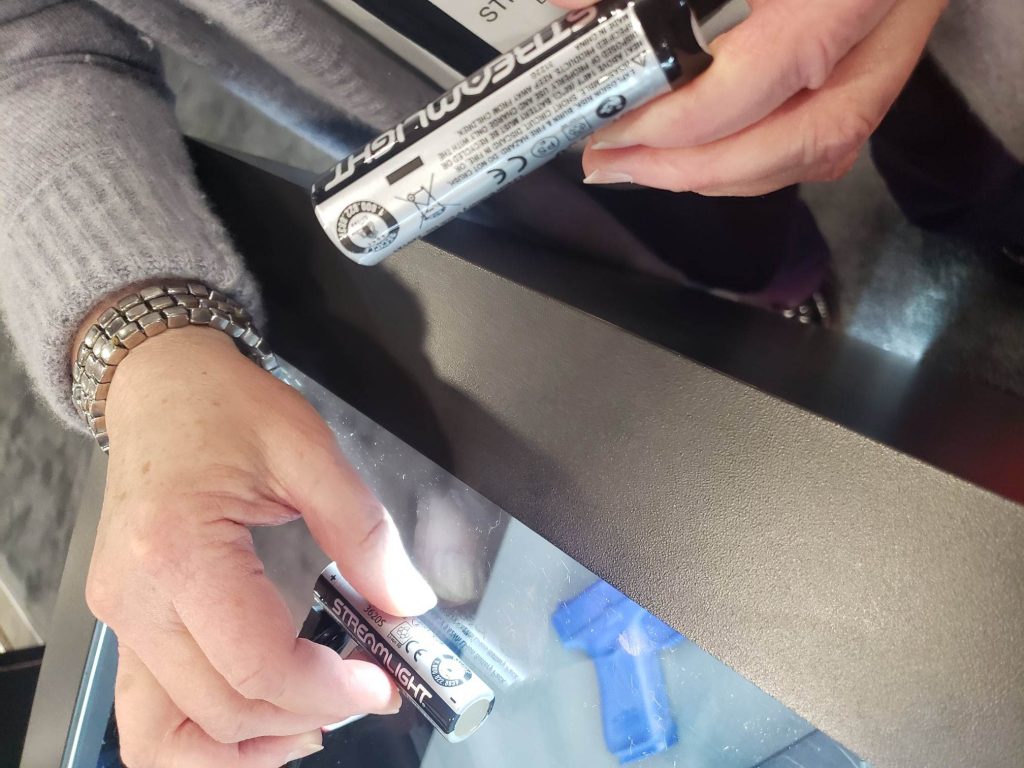
The Products with the Battery
This battery can be used with the ProTac 2.0 Primary Light, ProTac 2.0 Headlamp, and ProTac 2.0 Rail Mounted Light. Due to the battery being bigger the products did need to be updated to accept it such as the body size and the connection points. The most impressive part of this system though is how to ensure that the product has full battery power. While the battery is rechargeable you don’t need to take the battery out of the product to charge it. All of the ProTac 2.0 products have a slidable access port to the battery port. Simply slide the access port down insert your USB-C cable, charge, and then unhook and slide the access ring back over the port. Genius
Note: Don’t forget to close the slidable ring back over the port. While these products are water resistant, it isn’t ideal with even the best of products to let water just drip straight into a battery pack. Maybe color it red or put a piece of tape to not forget?
Streamlight also made it so that there is no way to screw up connection points or the product by inserting the battery wrong. Such as on the headlamp, it literally won’t go in if upside down.
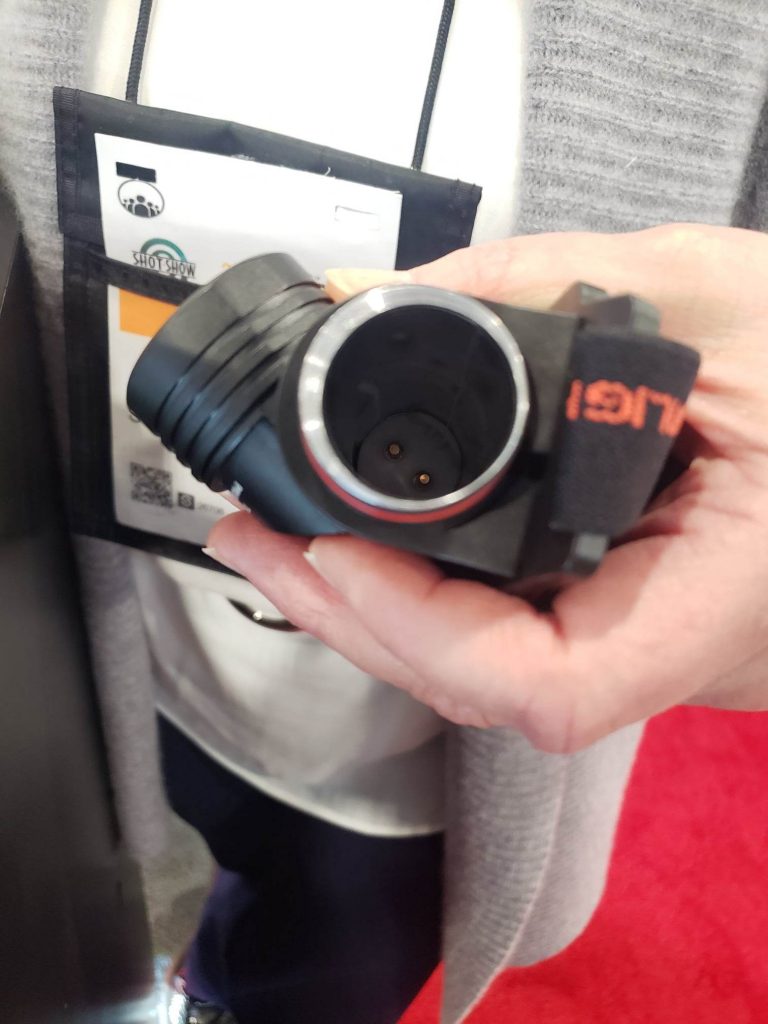
Products
Flashlight
Yay, another flashlight! Go ahead and add this one to your list, the updated ProTac 2.0 Flashlight. A perfect primary light or an inside the middle console light, this flashlight will include the new and improved battery with USB-C charging port.
Updated HeadLamp
The ProTac 2.0 Headlamp from Streamlight is comfortable to wear with or without a hard hat. Meaning all of those late night walks with the dogs, leave your hard hat at home.
Syclone Jr.
There are also some new products released within this line such as this cute itty bitty Syclone Jr. table sitting or hangable light. Meant to not take up a lot of space and be easy to pack, this little light gives off 210 lumens and can rotate 360 degrees. It can also run 3-8 hours dependent on output level. Perfect for an easy to throw in the pack work light.
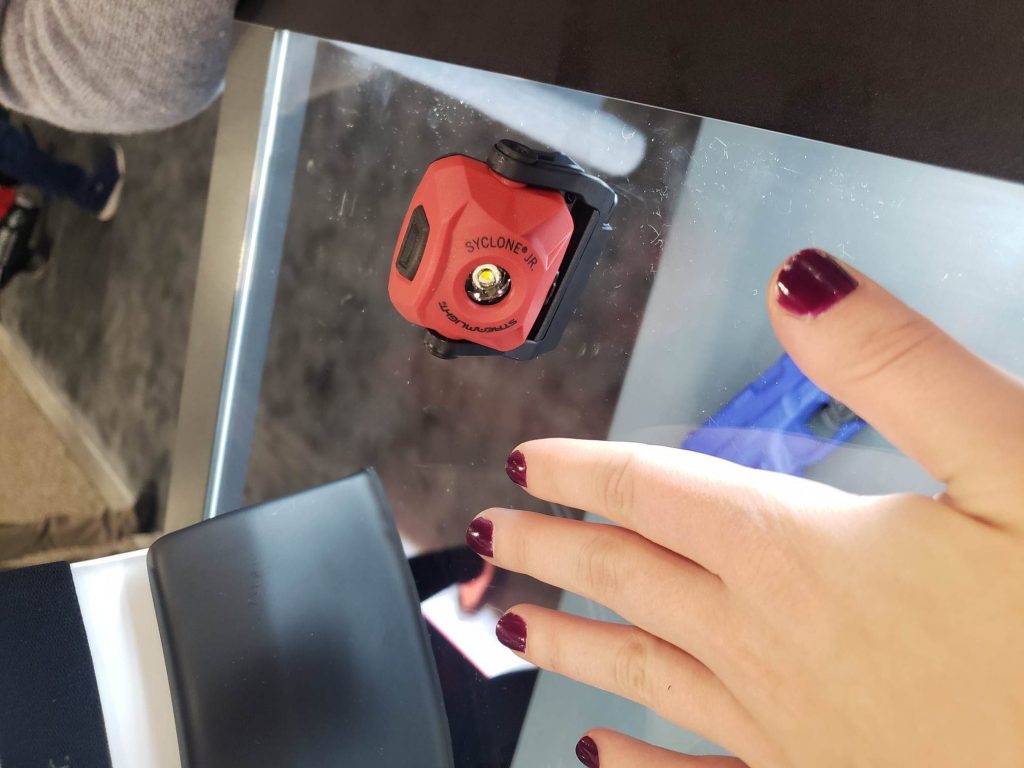
Rail Mounted Long Gun Light
2,000 lumens and a 2.5 hour run time on high power, the updated ProTac 2.0 long gun light is ready to go onto your bedside gun.
Sub-Gun
The TLR8-Sub Gun light with green laser has updated paddle switches with high and low options and a safe-off feature.
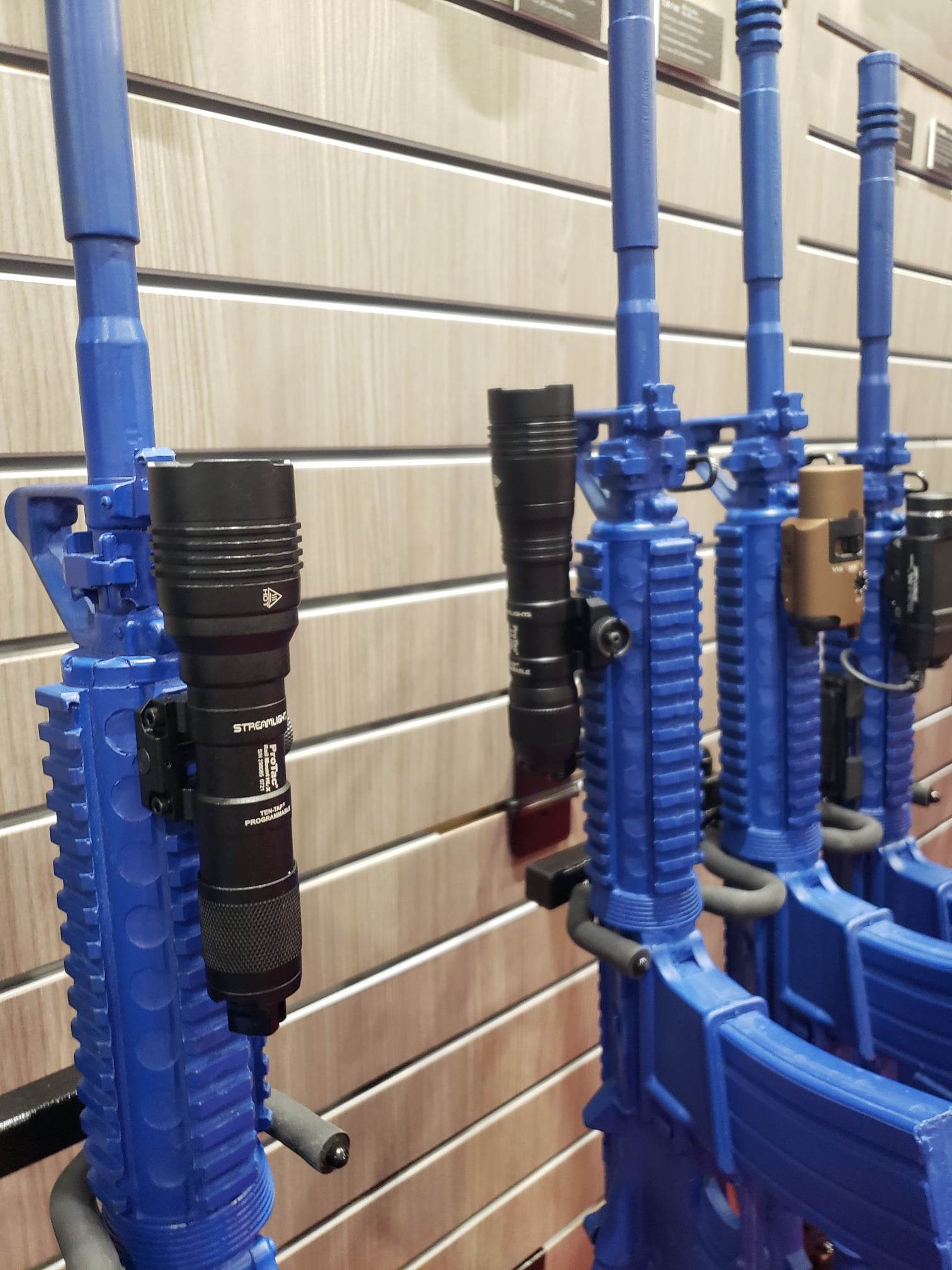
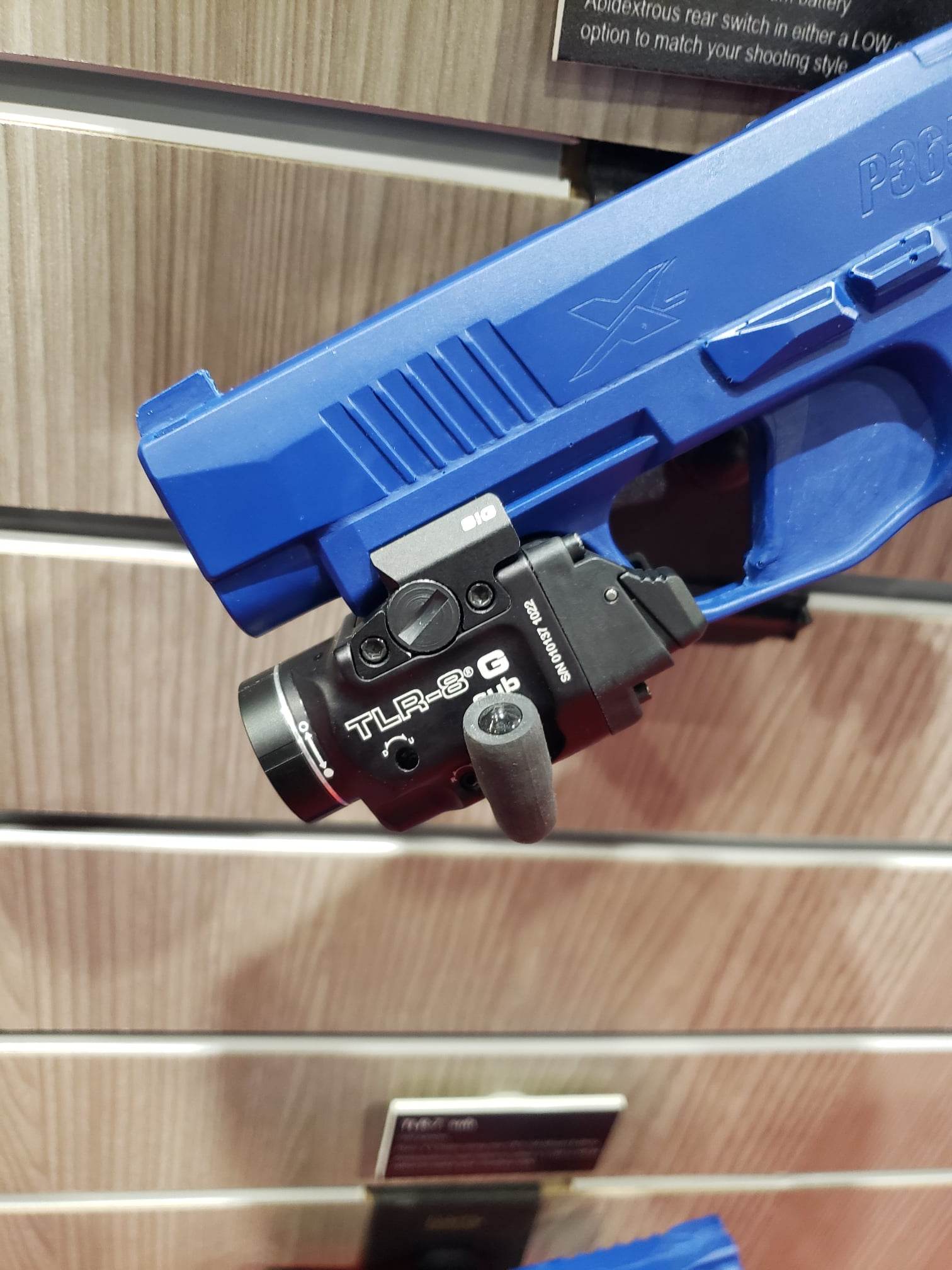
Honorable Mention
While not part of the ProTac 2.0 series and still only chargeable by mico USB, these lights will always get an honorable mention in any streamlight article. The MicroStream USB Pocket light is a staple due to being such an easy secondary light to have in your pants pock. Small and skinny but still outputting 250 lumens, it’s a must to have on the EDC tray. The Macrostream is a big larger and serves the same purpose.
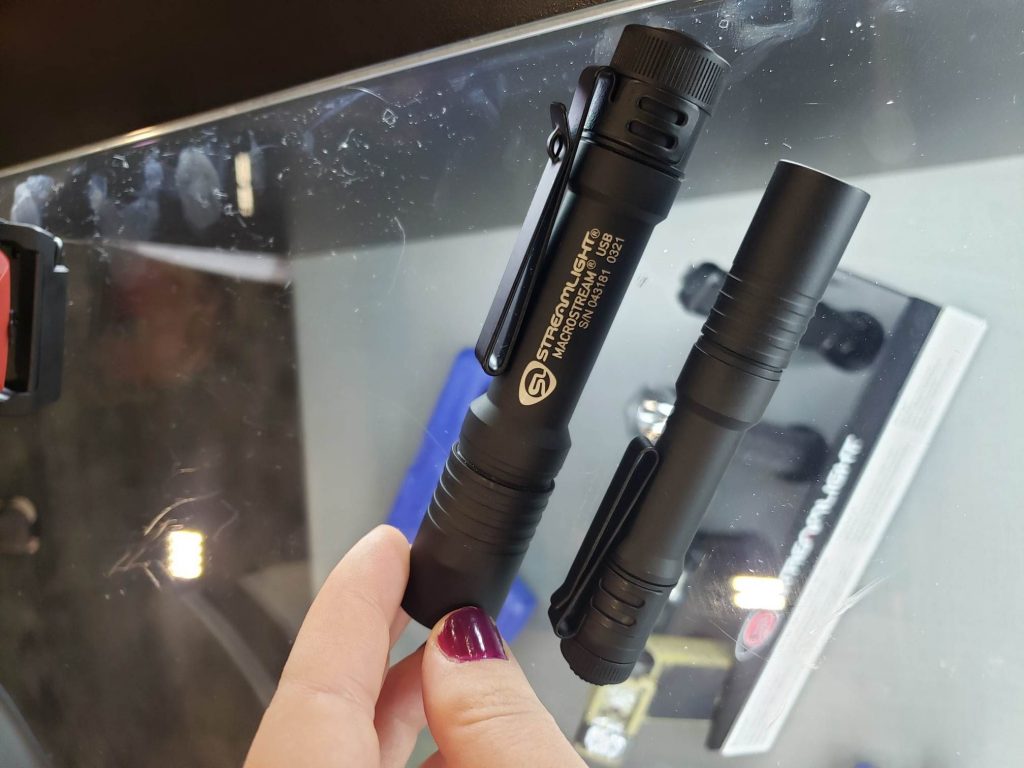
See all of their new products here.
Boy’s Rifle – A Lost Genre of Rifles
There was a time in America when children were commonly armed, and kids purchased rifles at hardware stores or won them as prizes. Depending on where you lived and when it wasn’t all that long ago. As a kid, I traveled with a cheap German .22LR revolver when I went exploring the wilderness, and I’m not that old. However, there was a time when it was so normal it spawned an entire niche of firearms called the Boy’s rifle.
What’s a Boy’s Rifle
As the name implies, these were designed and built for kids, mostly male. Boy’s rifles arguably first existed in 1890 and seemed to be popular until the 1950s and seemingly were gone by 1960. These rifles were produced by a wide variety of companies, both big and small. They tended to share a number of traits that define them as Boy’s rifles.
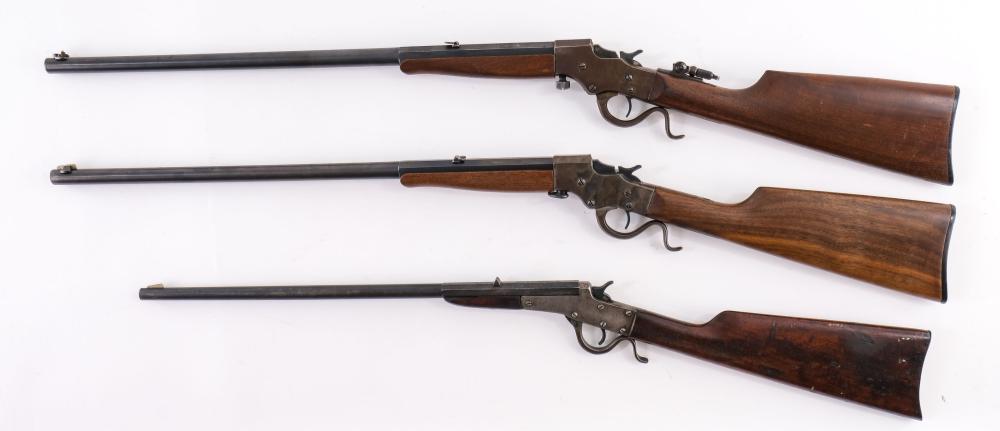
- They were cheap guns. Often very simple, somewhat ugly, and made to be beaten up and abused by the ruffian of an owner they had. The best model cost 5.50 in 1934.
- They were rimfire guns, most commonly some form of .22, but there were various rimfire options like .25 Rimfire and .32 Rimfire that were not that uncommon at certain time periods.
- These guns are typically single-shot firearms.
Those are the most common features of these guns. The most common form of operation appears to have been bolt action rifles, although falling block actions weren’t that uncommon. The sights across the top were often very simple and typically blade and notch style firearms.
Classic Boy’s Rifles
The first ever one of these rifles also coined the name. The Stevens Boys Rifles were really cool, and as a grown man, I want one. They were rimfire-falling block rifles. They came in numerous configurations, with their ‘Crack Shot’ model being the most popular. These guns were produced from 1890 to 1943.
Other companies picked up on this trend over the years, and the Hamilton Model 51 and later Hoban Model 45 exemplified the Boy’s Rifle. The Hoban Model 45 was even designed to look like a military rifle with a false magazine and a wood handguard that looked like it was straight off an M1 Carbine.

The fanciest of these guns was the Winchester Model 67. The rise of these entry-level, single-shot, cheap rifles was huge in the 1930s. This led a major company to develop their own, resulting in the classic Model 67 Junior Model, commonly called the Boy’s rifle.
These guns rooted themselves in a nice little spot in the gun stores of the time. They taught a generation of kids how to shoot. Some of that generation went on to fight the Nazis and Japanese and ensure democracy was preserved. Kids learned responsibility and safety with these rifles, and that’s a skill lacking today.
The Modern Boy’s Rifle
While these guns aren’t called Boy’s Rifles anymore, they aren’t gone from the market. Guns like the Cricket series exist that are basically a Boy’s rifle. Small, light, .22 caliber rifles that are manually operated and fire a single shot before needing to reload. Heck, some of them even look like modern military guns.
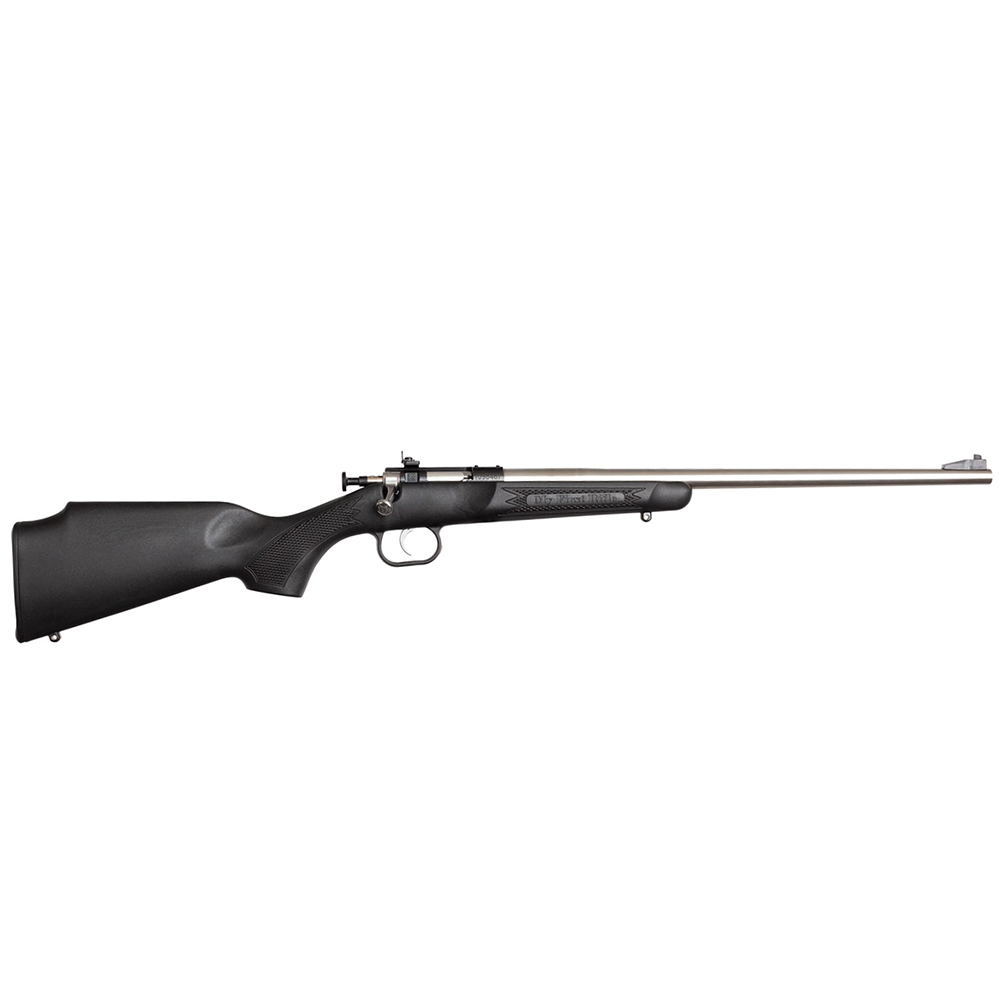
I think these rifles might be the most important rifles on the market. They aim to create new shooters. New shooters will continue to fuel the 2nd Amendment and the fight that comes in defending it.
San Francisco Is Starting To Issue More CCW Permits
For ordinary citizens who live in the state of California, getting a CCW (Concealed Carry Weapon) permit has traditionally been no small feat because the Golden State is a may-issue state. In California, the chief law enforcement officer (CLEO) of a specific county or municipality has the final say and discretion to authorize such permits. Different counties have different decision making processes to screen applicants they deem worthy of having these licenses. For most citizens living in California, the reality is that often times California CCW permits are something that are only granted to the privileged few with connections and special relationships.
In light of the Bruen case heard before the United States Supreme Court last year, the San Francisco’s Sheriff’s Department has issued its first CCW permit (pending the final training class for this applicant). The City And County of San Francisco have always had a strict reputation when it came to approving license-to-carry permits. According to San Francisco Sheriff Paul Miyamoto, prior to the Bruen ruling, only individuals considered to be in at-risk positions such as diamond jewelers or judges would have even been considered for a CCW permit in San Francisco. “The significant change from the Bruen decision was that they took out the ‘good cause’ requirement for someone who is applying for a CCW license,” Miyamoto added. “Which basically means as long as you clear our vetting process, our background procedures, and as long as you take a safety course and demonstrate you’re responsible, you’re given an opportunity to have a license.” Sheriff Miyamoto also elaborated on the fact that his office is currently processing 72 new CCW permit applications, and that they expect this number to more than double in the upcoming year. “This is very different from the four [applications] we processed in the past 10 or so years,” he said.
Another detail that Sheriff Miyamoto mentioned is the fact that the county of San Francisco will be the first of any Bay Area counties to require a psychological evaluation as part of their CCW permit screening process.
In spite of the Bruen ruling and the fact that the Sheriff’s Department is changing its protocols to reflect the law of the land, not everyone in San Francisco is happy with these new developments. There are several policy-makers in the Bay Area like Catherine Stefani and Hillary Rosen, both members of the San Francisco Board of Supervisors who are strongly opposed to the shift in CCW permit approval standards and pride themselves for the fact that the City of San Francisco is at the cutting-edge of gun-control. There are plans to draw up new city-specific ordinances concerning the carrying of handguns in certain areas and additional requirements in obtaining CCW permits in San Francisco. Besides last years’ Bruen case, these changes are coming at a time where many people in California are strongly concerned about the rising levels of crime and the ability of local law enforcement to police their communities.
From the Reloading Bench: Squibs due to Forgotten Powder
What is a Squib Round?
A squib/squib round/squib load is a malfunction in which a projectile has enough force to leave the casing that it was seated into but does not have enough force to entirely leave the barrel. Therefore the load is a squib, the casing is ejected, and the actual projectile is probably still in your barrel. Scary. A clear sign of a squib is a “pop” but no bang and hardly any recoil. A bullet missing from your case after ejecting it is also a clear sign of a squib. Hint Hint.
Now, let’s set the scene. During a one day precision rifle match in Iowa a shooter who is known to handload was shooting a stage with his bolt gun. After firing two shots and no issue, the next shot fired but with no boom. The shooter moves the bolt back, ejects the round, and chambers the next. Same thing, presses the trigger, no boom. Same thing again, ejects the round and chambers another, same issue.
Quick! What did this shooter do wrong?
Well first of all, he is lucky that his face didn’t get blown off.
The Problem
Short answer: The shooter forgot to put powder into his casings and is lucky that the primer did not detach the bullet from the case causing a squib. Which the shooter also failed to check for after ejecting his round that didn’t fire.
Long answer: During handloading people can often get complacent. Let’s face it, we are doing the same thing about 200x. Seating a primer, dropping powder, seating a bullet, marking the case. Over, and over, and over. This can cause complacency and complacenency can kill. Seriously.
What a lot of people don’t know is how important it is to check every case for powder. This is due to the simple fact that primers have enough power to fire a round without any extra powder. This means that if indeed you forget to load powder into a case and seat a bullet, that primer can cause a squib round due to having enough power to cause the bullet to leave the casing but not fully leave the barrel.
Therefore, if this a click and no boom happens to you as a shooter, you NEED TO CHECK THE ROUND THAT WAS EJECTED FOR A BULLET. If there is no bullet, it is probably still inside your barrel. If you shoot another round and that bullet impacts the lodged bullet in your barrel you will have a very bad day. I’m talking guns blowing up and faces getting injured. Including the eyes, looking at you precision shooters that don’t wear eyepro.

Fixing the Problem
So how do we as handloaders ensure that this never happens?
After every 50 cases are filled with powder, or 100 dependent on the size of your reloading block, take a flashlight and go row by row one by one and ensure that each is filled with powder. Take this extra 10 second step and it will save you in the future.
Also, again, if you have a click no boom, always check the round that was ejected. This goes for bolt guns, gas guns, even pistols. Squibs are no joke so when a malfunction happens, just slow down and see what is going on.
The .22 Long and Extra Long – Forgotten Cartridges
The little .22LR might be the most popular round sound every year. I’m willing to bet more .22LR is sold than any other round on the market since most people buy them by the hundreds. The .22LR is the most popular of rounds, and even ole Short round still gets some love. Enough love that I can find it in Walmart. What about .22 Long, or the even more oft forgot Extra long?
These forgotten rimfire rounds are all in the same family of cartridges, and all came to be before the end of the 1800s. The late 1800s saw a boom in rimfire rounds. The metallic cartridge came to be during and right after the civil war, and rimfire were one of the more popular choices. As the industry moved toward centerfire cartridges, the littlest of cartridges remained rimfire mostly because there wasn’t enough room to fit a centerfire fire primer in the case.
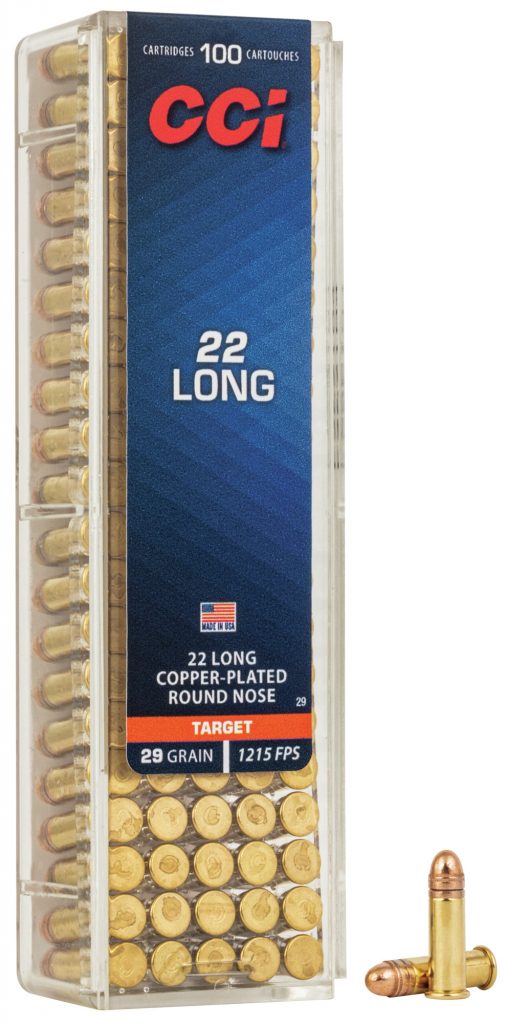
It all starts with the parlor guns of the era and the 6mm Flobert aka the .22 BB. Eventually, this evolved into the micro-sized .22 Short. This round was used for hunting, recreation, and even self-defense in early model S&W revolvers.
As time passed, the rounds became prominent for recreation and the hunting of small game. Thus, they added heavier bullets and more powder on top of longer cases to kill bigger small game and even serve in self-defense roles. This leads us to the two calibers in today’s discussion, the .22 Long and .22 Extra Long.
The .22 Long
The .22 Long evolved directly from the .22 Short. It first came to be in 1871. The original load was a 29-grain projectile on top of 5 grains of black powder. This was a 25% increase in power from the Short. The case was lengthened to .613 inches.
The intent was for revolvers. In 1870 Rollin White’s patent for metallic cartridge revolvers expired, and everyone hopped on the train to produce metallic cartridge revolvers that loaded via the rear of the cylinder.
Colt specifically produced the Colt Open Top Pocket Model Revolver. At this time period, the .22 Short chambered S&W Model Ones were popular everywhere. Colt wanted something different and produced this high-quality revolver in this new .22 Long cartridge. It was more powerful than the .22 Short and allowed Colt to stand out.
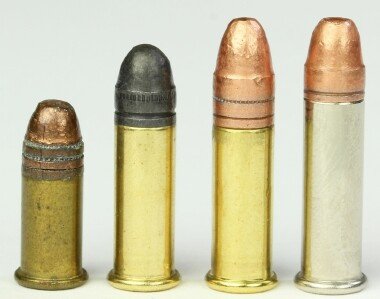
It wasn’t long until the cartridge made its way into rifles that it became quite popular. For nearly 10 years, it ruled the roost for those looking to dispatch squirrels and rabbits, or to have a convenient carry piece for self-defense.
The .22 Extra Long
In 1880 the rimfire arms race continued, and the .22 Extra Long found its way into existence. It was an immediate hit. Remington, S&W, Stevens, and Winchester all produced rifles in this new, feisty rimfire round. Shooters got a case that was .75 inches with 6 grains of black powder and a 40-grain projectile. It tossed the round at 1,050 feet per second. Hunters and riflemen got a nice heavy round for hitting larger animals at greater range. You weren’t deer hunting with an Extra Long, but many a coyote and rabbit likely met their end at the end of a .22 Extra Long.
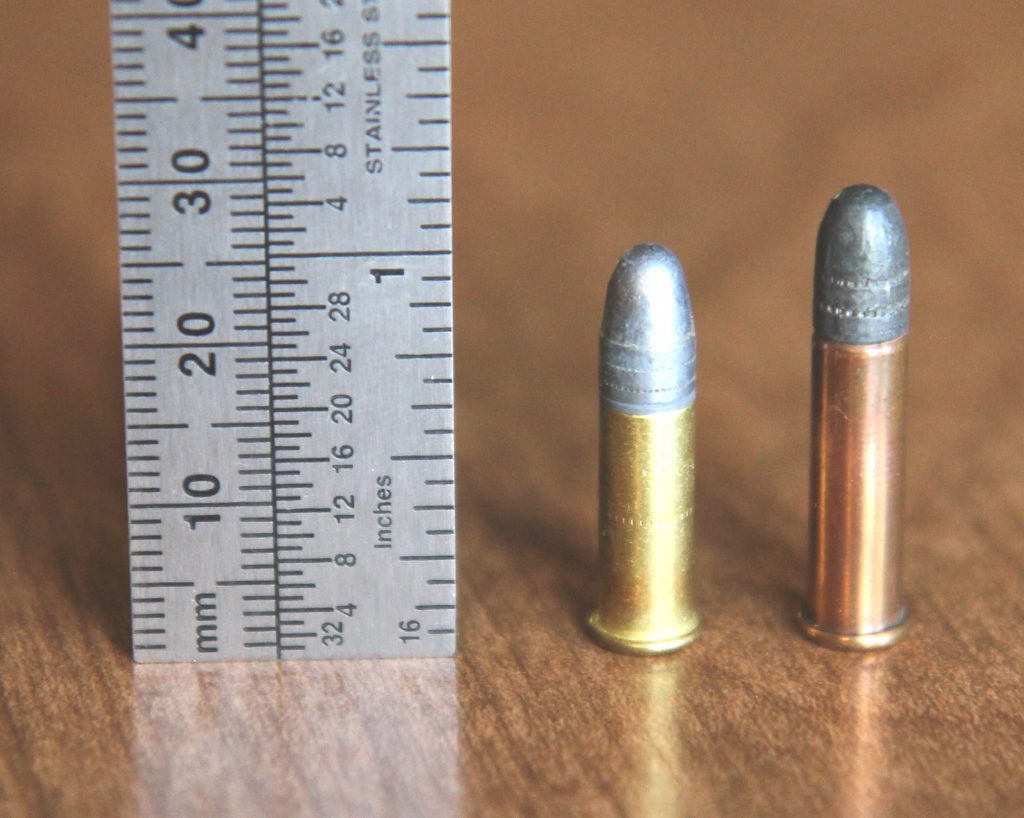
While it seemed like a good cartridge, it had some accuracy issues, and by 1887, the new Long Rifle round unseated it. Well, not at first. Admittedly once smokeless powder took over the more accurate LR round proved to be just as capable as the .22 Extra long with a shorter case and higher accuracy.
The Sweet Spot
The .22LR found the sweet spot for rimfire, .22 caliber cartridges. Its popularity has exploded to the point where another rimfire round will be unlikely to unseat it. However, its good to know where we came from, and rounds like the .22 Long and .22 Extra Long got us the Long Rifle round, and for that, they deserve a little credit.
FPC Files Lawsuit Against ATF Brace Rule.
It’s 1:20 PM Eastern and my inbox received the expected challenge to the ATF’s posted regulation a mere 260 minutes after the open of business here.
DALLAS, TX (January 31, 2023) – Today, Firearms Policy Coalition (FPC) announced the filing of litigation challenging the Bureau of Alcohol, Tobacco, Firearms and Explosives’ Final Rulemaking on firearms equipped with stabilizing or pistol braces. The Petition in FPC’s Mock v. Garland, along with other case documents, can be viewed at FPCLaw.org.
“This lawsuit challenges, inter alia, the Factoring Criteria for Firearms with Attached Stabilizing Braces, promulgated by the Department of Justice and the Bureau of Alcohol, Tobacco, Firearms and Explosives to regulate ‘braced pistols’ as ‘short-barreled rifles.’ In so doing, for the reasons set forth herein, the Agencies violate the Administrative Procedure Act and the United States Constitution,” the Petition states.
The Petition continues: “Even if the Final Rule does not violate the APA and is allowed to stand, the Agencies’ National Firearms Act (“NFA”), laws, regulations, policies, and enforcement practices with respect to ‘braced pistols’ that the Agencies’ have classified as “short-barreled rifles” violate the Second Amendment. Plaintiffs thus further seek declaratory and injunctive relief to secure their constitutionally protected right to keep and bear arms in the absence of vacatur of the Final Rule.”
“Federal agencies do not have the power to write new laws, and yet the ATF continues to attempt to expand its authority using the federal rulemaking process,” said Cody J. Wisniewski, FPC’s Senior Attorney for Constitutional Litigation. “This ‘rule’ is, in effect, a federal law that will transform millions of peaceable people into felons overnight simply for owning a firearm that has been lawful to own for decades. We won’t stand idly by while the ATF tramples the rights of millions of peaceable individuals.”
“At its most basic level, this rulemaking represents a massive and unlawful bait-and-switch on peaceable gun owners,” said FPC Director of Legal Operations Bill Sack. “For nearly a decade the ATF’s position on pistol braces has been relied on by millions of gun owners. Now, with the stroke of a bureaucrat’s pen, those same people are told they are felons unless and until they submit themselves to invasive regulation, registration, dispossession of their property, or worse.”
Individuals who would like to Join the FPC Grassroots Army and support important pro-rights lawsuits and programs can sign up at JoinFPC.org. Individuals and organizations wanting to support charitable efforts in support of the restoration of Second Amendment and other natural rights can also make a tax-deductible donation to the FPC Action Foundation. For more on FPC’s lawsuits and other pro-Second Amendment initiatives, visit FPCLegal.org and follow FPC on Instagram, Twitter, Facebook, YouTube.
Firearms Policy Coalition (firearmspolicy.org), a 501(c)4 nonprofit organization, exists to create a world of maximal human liberty, defend constitutional rights, advance individual liberty, and restore freedom. FPC’s efforts are focused on the Right to Keep and Bear Arms and adjacent issues including freedom of speech, due process, unlawful searches and seizures, separation of powers, asset forfeitures, privacy, encryption, and limited government. The FPC team are next-generation advocates working to achieve the Organization’s strategic objectives through litigation, research, scholarly publications, amicus briefing, legislative and regulatory action, grassroots activism, education, outreach, and other programs.
FPC Law (FPCLaw.org) is the nation’s first and largest public interest legal team focused on the Right to Keep and Bear Arms, and the leader in the Second Amendment litigation and research space.
Especially considering this language in the rule summary,
Notwithstanding the 120-day compliance period, discussed above, the rule is immediately effective in that the Department may seek to enforce the NFA’s requirements with respect to any new making or new transfer of a weapon with an attached “stabilizing brace” that constitutes a short-barreled rifle under the NFA. The Department believes that delaying enforcement of the relevant NFA provisions is not necessary to allow an equitable opportunity for compliance because all persons, through publication of this rule, have received notice that the NFA may in fact apply to their conduct. Further delaying enforcement also would be inconsistent with public safety. Therefore, ATF may enforce the NFA against any person or entity that—any time after the publication date of this rule—newly makes or transfers a weapon with an attached “stabilizing brace” that constitutes a short-barreled rifle under the NFA. For purposes of the Congressional Review Act, however, the Department will wait to actually initiate such enforcement actions for at least 60 days from publication of the rule in the Federal Register . See 5 U.S.C. 801(a)(3).
The brace rule is enforceable immediately but the department is waiting 60 days for congressional review for compliance with the CRA. This has been flagged to apply to new builds and transfers, no action is listed to be taken against possessors who lawfully purchased their or built their firearm in the current braced configuration and those possessors have until May 31st to file their tax exempt Form 1.
This sounds like they made a law, looks like they made a law, feels like they made a law, and smells like they… well, nevermind on that. But the brace rule has been hit with the expected immediate challenge. We will see how the courts take to the challenge and what measures, such as a pause on enforcement, implementation, the timetable for amnesty, etc. that will result as it makes its way through the legal system.
I fully expect this to fail after review, the questions are whose and when.


